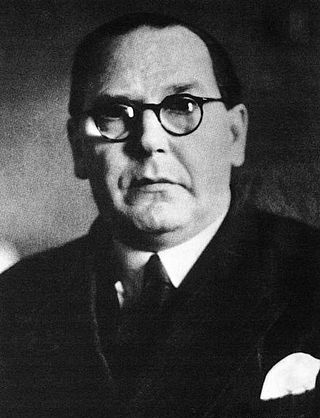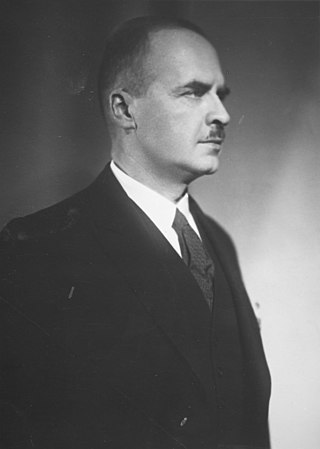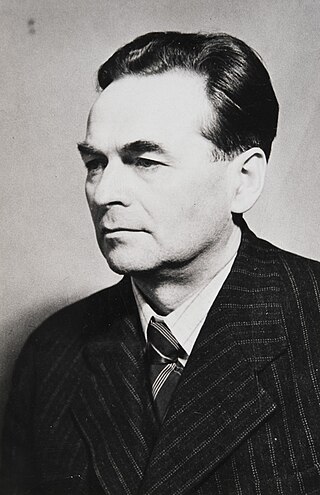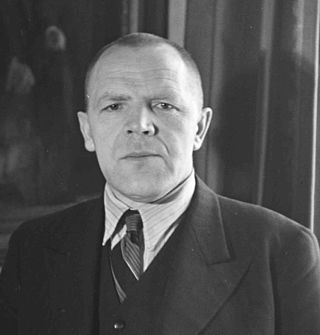Related Research Articles

The Continuation War, also known as the Second Soviet-Finnish War, was a conflict fought by Finland and Nazi Germany against the Soviet Union during World War II. It began with a Finnish declaration of war and invasion on 25 June 1941 and ended on 19 September 1944 with the Moscow Armistice. The Soviet Union and Finland had previously fought the Winter War from 1939 to 1940, which ended with the Soviet failure to conquer Finland and the Moscow Peace Treaty. Numerous reasons have been proposed for the Finnish decision to invade, with regaining territory lost during the Winter War regarded as the most common. Other justifications for the conflict include Finnish President Risto Ryti's vision of a Greater Finland and Commander-in-Chief Carl Gustaf Emil Mannerheim's desire to annex East Karelia.

The Karelo-Finnish Soviet Socialist Republic, also called Soviet Karelia or simply known as Karelia, was a republic of the Soviet Union. It existed from 1940 until it was made part of the Russian SFSR in 1956 as the Karelian Autonomous Soviet Socialist Republic. The latter became the Republic of Karelia, a federal subject of Russia, on 13 November 1991.

Porkkalanniemi is a peninsula in the Gulf of Finland, located at Kirkkonummi (Kyrkslätt) in Southern Finland.

The Moscow Peace Treaty was signed by Finland and the Soviet Union on 12 March 1940, and the ratifications were exchanged on 21 March. It marked the end of the 105-day Winter War, upon which Finland ceded border areas to the Soviet Union. The treaty was signed by Vyacheslav Molotov, Andrei Zhdanov and Aleksandr Vasilevsky for the Soviet Union, and Risto Ryti, Juho Kusti Paasikivi, Rudolf Walden and Väinö Voionmaa for Finland. The terms of the treaty were not reversed after the dissolution of the Soviet Union. The Karelian question refers to the debate within Finland over the possible reacquisition of this ceded territory.
Following the termination of hostilities in World War II, the Allies were in control of the defeated Axis countries. Anticipating the defeat of Germany and Japan, they had already set up the European Advisory Commission and a proposed Far Eastern Advisory Commission to make recommendations for the post-war period. Accordingly, they managed their control of the defeated countries through Allied Commissions, often referred to as Allied Control Commissions (ACC), consisting of representatives of the major Allies.

Karl-August Fagerholm was a Finnish politician. Fagerholm served as Speaker of Parliament and three times Prime Minister of Finland. Fagerholm became one of the leading politicians of the Social Democrats after the armistice in the Continuation War. As a Scandinavia-oriented Swedish-speaking Finn, he was believed to be more to the taste of the Soviet Union's leadership than his predecessor, Väinö Tanner. Fagerholm's postwar career was, however, marked by fierce opposition from both the Soviet Union and the Communist Party of Finland. He narrowly lost the presidential election to Urho Kekkonen in 1956.

Finland participated in the Second World War initially in a defensive war against the Soviet Union, followed by another, this time offensive, war against the Soviet Union acting in concert with Nazi Germany and then finally fighting alongside the Allies against Germany.

Karl Rudolf Walden was a Finnish industrialist and a military leader.

Carl Johan Alexis Enckell was a Finnish politician, diplomat, officer and businessman.

The Moscow Armistice was signed between Finland on one side and the Soviet Union and United Kingdom on the other side on 19 September 1944, ending the Continuation War. The Armistice restored the Moscow Peace Treaty of 1940, with a number of modifications.

The 1944 Romanian coup d'état, better known in Romanian historiography as the Act of 23 August, was a coup d'état led by King Michael I of Romania during World War II on 23 August 1944. With the support of several political parties, the king removed the government of Ion Antonescu, which had aligned Romania with Nazi Germany, after the Axis front in northeastern Romania collapsed in the face of a successful Soviet offensive. The Romanian Army declared a unilateral ceasefire with the Soviet Red Army on the Moldavian front, an event viewed as decisive in the Allied advances against the Axis powers in the European theatre of World War II. The coup was supported by the Romanian Communist Party, the Social Democratic Party, the National Liberal Party, and the National Peasants' Party who had coalesced into the National Democratic Bloc in June 1944.

Antti Verner Hackzell was a Finnish politician from the National Coalition Party and Prime Minister of Finland from August to September 1944.

Urho Jonas Castrén was a judge, serving for 27 years as the President of the Supreme Administrative Court of Finland. During the constitutional crisis of 1944, Castrén, representing the National Coalition Party, became Prime Minister of Finland for a brief period.

Yrjö Kaarlo Leino was a Finnish communist politician. Imprisoned twice for his communist activities, and spending much of the Second World War as an underground communist activist, he served as a minister in three cabinets between 1944 and 1948.

Viljami Kalliokoski was a Finnish farmer and politician. He was a member of the Agrarian League.

Soviet prisoners of war in Finland during World War II were captured in two Soviet-Finnish conflicts of that period: the Winter War and the Continuation War. The Finns took about 5,700 POWs during the Winter War, and due to the short length of the war they survived relatively well. However, during the Continuation War the Finns took 64,000 POWs, of whom almost 30 percent died.

The Social Democratic Party of Finland is a social democratic political party in Finland. It is the third largest party in the Parliament of Finland with 43 seats.

Reinhold Konstantin Svento was a Finnish politician who served as a speaker of the Finnish Social Democratic Party between 1922 and 1945 and MP from the Finnish People's Democratic League 1945-1948, 1944-1948 as II Foreign Minister in three Governments and 1948-1951 as Envoy of Finland to Bern. Svento, also a member of the Helsinki City Council, also acted as a five-times electoral in presidential elections.
Karl Volter Boris Gyllenbögel was a Finnish Colonel, a Diplomat and a principal.

The cabinet of Antti Rinne was the 75th government of Finland. It was formed following the parliamentary election of 2019 and was formally appointed by President Sauli Niinistö on 6 June 2019. The cabinet consisted of a coalition formed by the Social Democratic Party, the Centre Party, the Green League, the Left Alliance, and the Swedish People's Party. The cabinet's Prime Minister was Antti Rinne.
References
- ↑ 27. Hackzell Archived 2012-04-02 at the Wayback Machine Finnish Government. (in Finnish)
